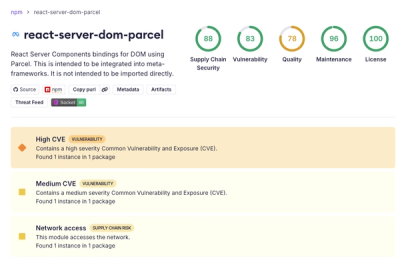


Rate limit made simple, easy, async. Based on ratelimiter.
Install
$ npm install async-ratelimiter --save
Usage
The most straightforward way to use the rate limiter:
'use strict'
const RateLimiter = require('async-ratelimiter')
const { getClientIp } = require('request-ip')
const Redis = require('ioredis')
const rateLimiter = new RateLimiter({
db: new Redis()
})
const apiQuota = async (req, res, next) => {
const clientIp = getClientIp(req)
const limit = await rateLimiter.get({ id: clientIp })
if (!res.writableEnded) {
res.setHeader('X-Rate-Limit-Limit', limit.total)
res.setHeader('X-Rate-Limit-Remaining', Math.max(0, limit.remaining - 1))
res.setHeader('X-Rate-Limit-Reset', limit.reset)
}
return !limit.remaining
? sendFail({
req,
res,
code: HTTPStatus.TOO_MANY_REQUESTS,
message: MESSAGES.RATE_LIMIT_EXCEDEED()
})
: next(req, res)
}
For scenarios where you want to check the limit status before consuming a request, you should to pass { peek: true }:
const apiQuota = async (req, res, next) => {
const clientIp = getClientIp(req)
const status = await rateLimiter.get({ id: clientIp, peek: true })
if (status.remaining === 0) {
return sendFail({
req,
res,
code: HTTPStatus.TOO_MANY_REQUESTS,
message: MESSAGES.RATE_LIMIT_EXCEDEED()
})
}
const limit = await rateLimiter.get({ id: clientIp })
if (!res.writableEnded) {
res.setHeader('X-Rate-Limit-Limit', limit.total)
res.setHeader('X-Rate-Limit-Remaining', limit.remaining)
res.setHeader('X-Rate-Limit-Reset', limit.reset)
}
return next(req, res)
}
API
constructor(options)
It creates an rate limiter instance.
options
db
Required
Type: object
The redis connection instance.
max
Type: number
Default: 2500
The maximum number of requests within duration.
duration
Type: number
Default: 3600000
How long keep records of requests in milliseconds.
namespace
Type: string
Default: 'limit'
The prefix used for compound the key.
id
Type: string
The identifier to limit against (typically a user id).
You can pass this value using when you use .get method as well.
.get(options)
Given an id, returns a Promise with the status of the limit with the following structure:
total: max value.remaining: number of calls left in current duration without decreasing current get.reset: time since epoch in seconds that the rate limiting period will end (or already ended).
options
id
Type: string
Default: this.id
The identifier to limit against (typically a user id).
max
Type: number
Default: this.max
The maximum number of requests within duration. If provided, it overrides the default max value. This is useful for custom limits that differ between IDs.
duration
Type: number
Default: this.duration
How long keep records of requests in milliseconds. If provided, it overrides the default duration value.
peek
Type: boolean
Default: false
When set to true, returns the current rate limit status without consuming a request. This is useful for checking the current rate limit status before deciding whether to proceed with an operation.
defineCommand
It provides the command definition so you can load it into any ioredis instance:
const Redis = require('ioredis')
const redis = new Redis(uri, {
scripts: { ...require('async-ratelimiter').defineCommand }
})
Related
- express-slow-down – Slow down repeated requests; use as an alternative (or addition) to express-rate-limit.
License
async-ratelimiter © microlink.io, released under the MIT License.
Authored and maintained by Kiko Beats with help from contributors.
microlink.io · GitHub microlink.io · X @microlinkhq








